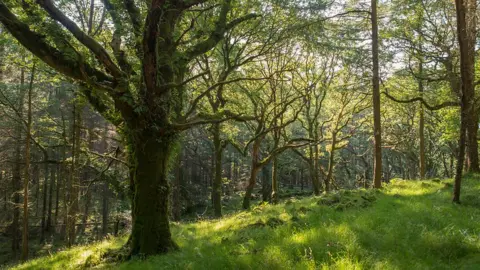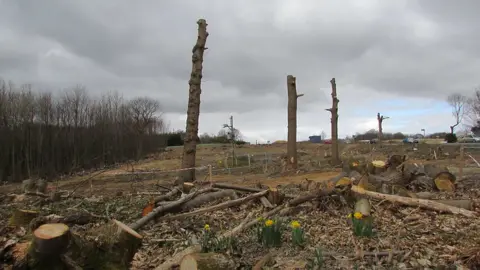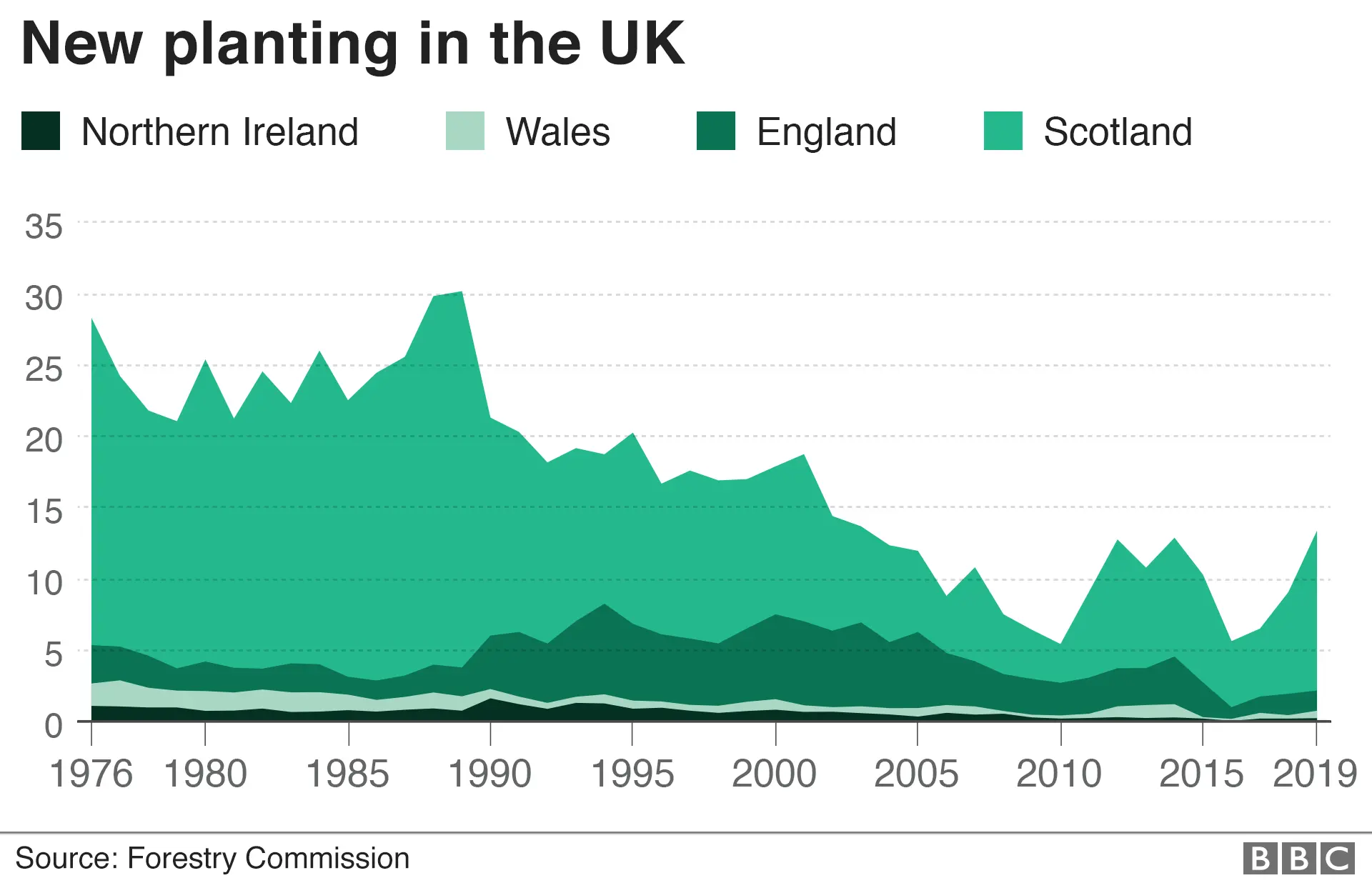UK woodlands 'at crisis point' amid wildlife decline
 Mark Zytynski/The Woodland Trust
Mark Zytynski/The Woodland TrustA review of the state of Britain's native woods and trees has found only 7% are in a good condition.
While woodland cover is slowly increasing, the wildlife within it is decreasing, says the Woodland Trust.
If threats to woodland aren't tackled, the UK's ability to tackle climate and nature crises will be "severely damaged", the charity warns.
The Woodland Trust is among a number of groups calling for legally binding targets for the recovery of nature.
"The warning signs in this report are loud and clear," says Abi Bunker, director of conservation and external affairs at the Woodland Trust.
"If we don't tackle the threats facing our woods and trees, we will severely damage the UK's ability to address the climate and nature crises."
 Ben Holmes/The Woodland Trust
Ben Holmes/The Woodland TrustWoodland now covers 13% of UK land, up from 12% in 1998.
About half is made up of native tree species, such as oak, beech and ash, including centuries-old ancient woodlands. The remaining half comprises non-native trees such as conifers grown commercially for timber.
Despite the small increase in the amount of woodland cover over the past few decades, the trend for wildlife is one of steep decline, said the Woodland Trust.
"Wildlife is going down - woodland birds, woodland butterflies, woodland plants are all going in the wrong direction for woodlands as a whole," Chris Reid, lead author of the report, told BBC News.
"This is down to factors such as pollution, invasive species, deer browsing and fragmentation - woods chopped up into small parcels. All of these need to be tackled."


The report, State of the UK's Woods and Trees 2021, found that ancient woodlands lock up proportionally more carbon than other types of tree cover.
Estimates suggest that ancient and long-established woodlands hold 36% of all woodland carbon (77 million tonnes).
"They're really important in terms of their ability to tackle climate change whilst providing that real specialist and irreplaceable habitat for declining wildlife," says Hazel Jackson of the Woodland Trust.
Ancient woodlands continue to be lost and damaged by house building, new road and railways, the report says.
It calls for a better balance to be restored by removing non-native trees and invasive plants such as rhododendrons.


The report says as well as protecting existing woodlands, we need to quadruple current tree planting efforts and increase the proportion of native tree species.
Location and quality are the key to success, it argues, including connecting existing native woods and creating new ones near urban populations and in areas at high risk of flooding.
The Committee on Climate Change, the government's independent adviser on tackling climate change, has called for the planting of more trees and woodlands if the UK is to reach net-zero carbon emissions by 2050.
It recommends increasing UK woodland cover from its current level of 13% of total land cover to at least 17%, and possibly to 19% by 2050.
Follow Helen on Twitter.
